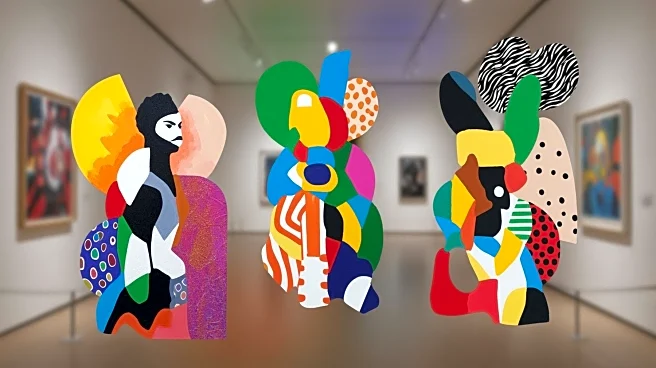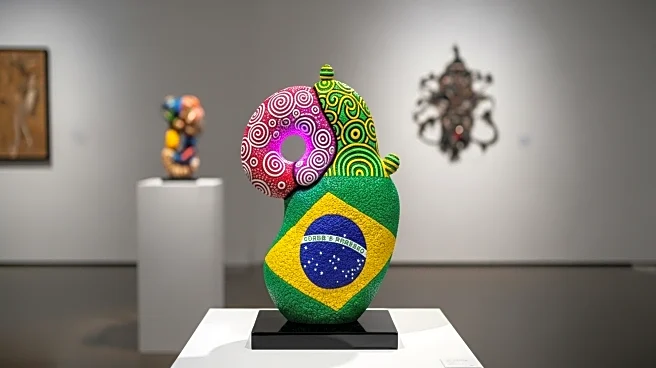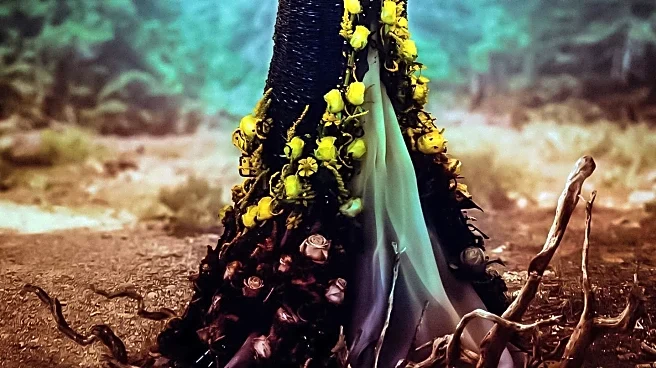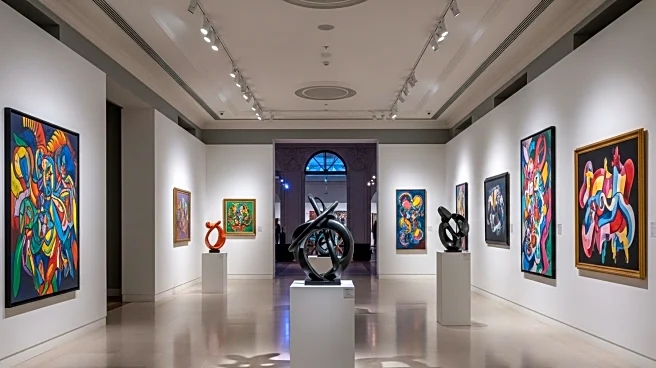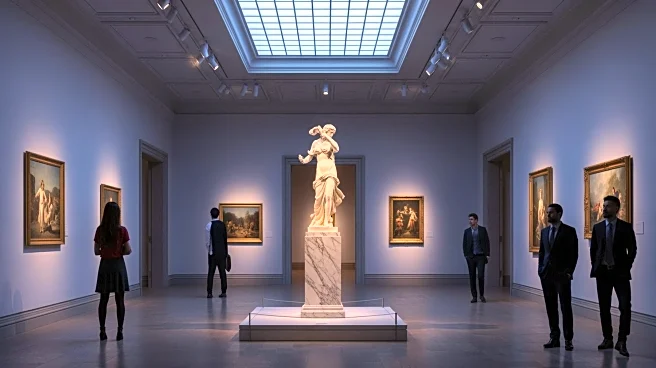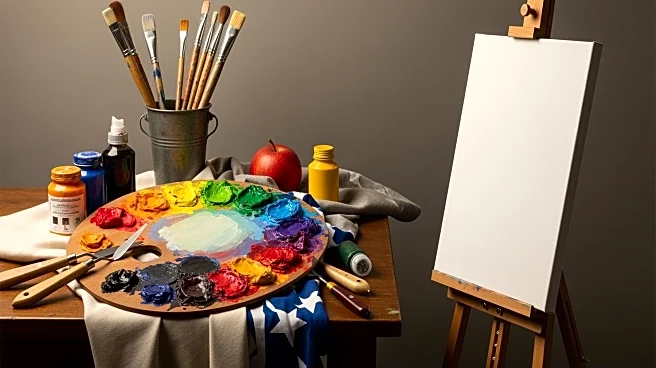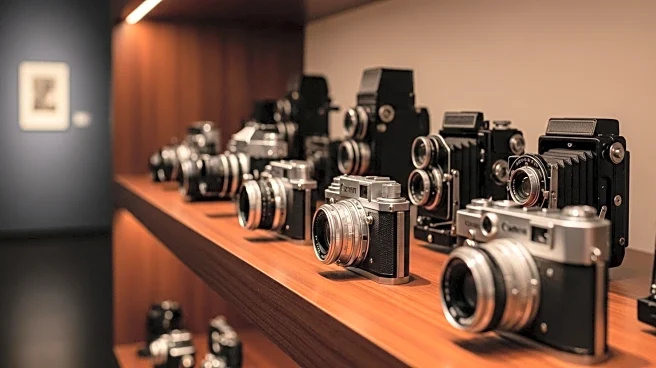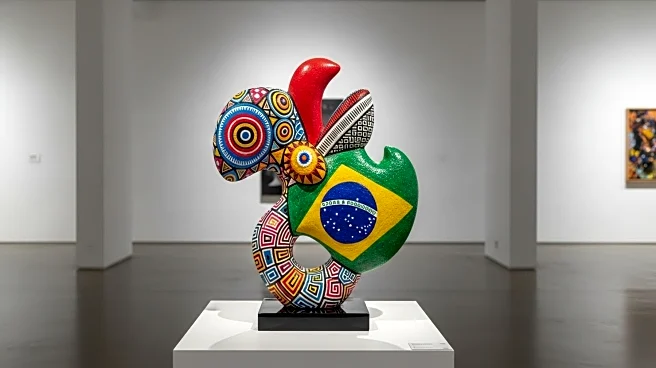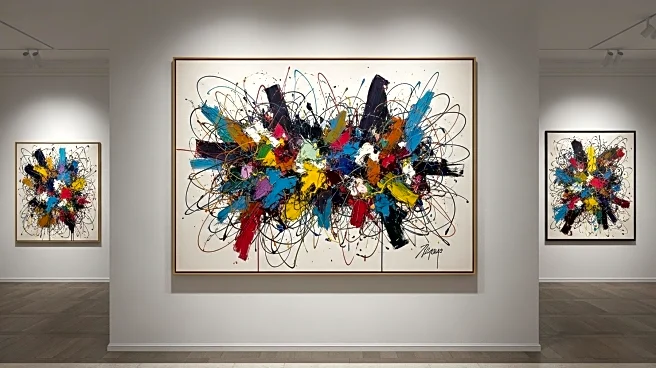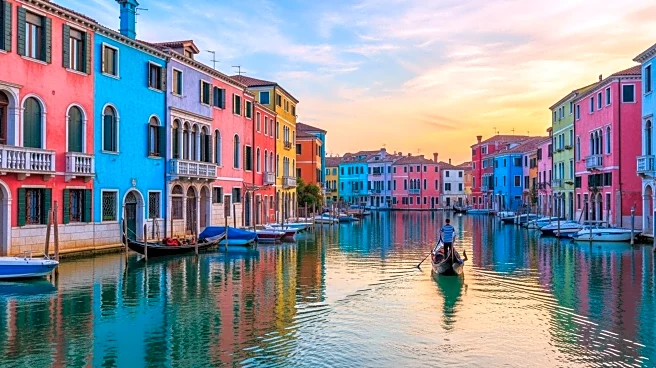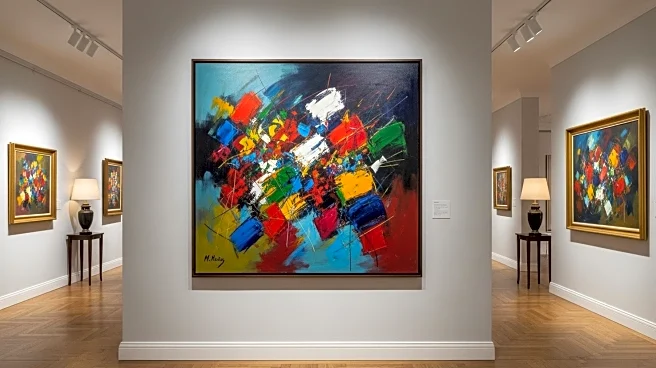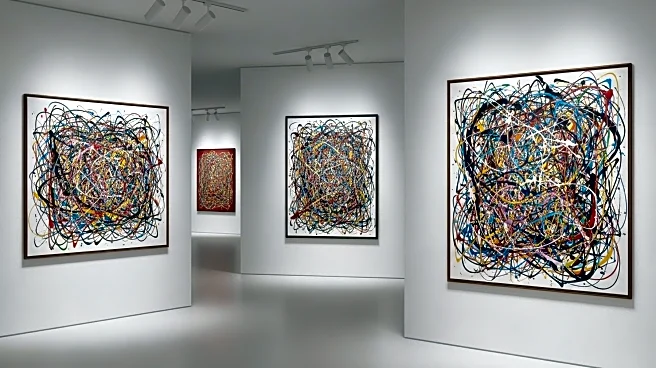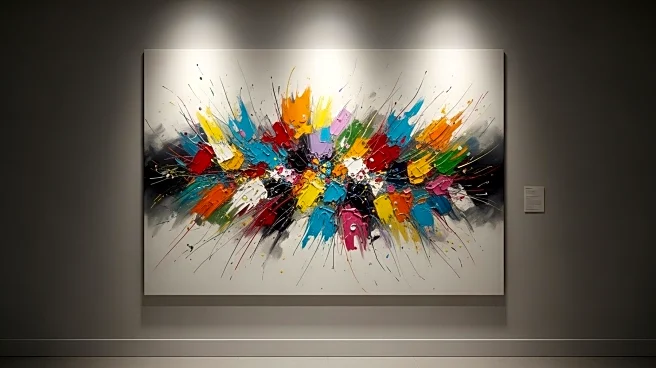What's Happening?
Tate Modern is hosting an exhibition titled 'Nigerian Modernism,' curated by Osei Bonsu and Bilal Akkouche, featuring 300 works by Nigerian artists. The exhibition aims to rectify the historical oversight of modern African artists in the global art narrative.
It highlights the contributions of Nigerian artists to modernism, challenging colonial prejudices and showcasing the diversity of artistic influences. The exhibition includes works from private collections and regional institutions, many of which have never been displayed in an institutional context. The show emphasizes the unique cultural and historical factors that shaped Nigerian modernism, offering a comprehensive view of the country's artistic evolution throughout the 20th century.
Why It's Important?
The exhibition is significant as it addresses the historical neglect of African artists in the global art narrative, providing a platform for their recognition and appreciation. It challenges Eurocentric perspectives on modernism and highlights the rich cultural heritage and artistic innovation of Nigeria. By showcasing these works, Tate Modern contributes to a broader understanding of global art history and promotes cultural diversity. The exhibition also serves as a celebration of Nigeria's artistic achievements and its role in shaping modernist movements, offering insights into the country's cultural and political history.
What's Next?
The exhibition is expected to run until May 2026, providing ample opportunity for art enthusiasts and scholars to explore Nigeria's modernist art. It may inspire further research and exhibitions focused on African art, encouraging institutions to diversify their collections and narratives. The success of this exhibition could lead to increased interest in Nigerian artists and their works, potentially influencing the global art market and academic discourse. It may also prompt other museums to reevaluate their collections and address similar historical oversights.
Beyond the Headlines
The exhibition highlights the broader implications of cultural representation and the importance of inclusivity in art institutions. It underscores the need for ongoing efforts to recognize and celebrate diverse artistic contributions, challenging traditional narratives and promoting cultural equity. The show may influence future curatorial practices, encouraging museums to prioritize diverse perspectives and engage with underrepresented artists and communities.
